In 2008, James Gee published the results of his extensive search for the rare European maps of Arabia that included names that seem related to Nahom, the place where Ishmael was buried as described by Nephi in the Book of Mormon (1 Nephi 16:34). See James Gee, “The Nahom Maps,” Journal of the Book of Mormon and Restoration Scripture 17, nos. 1-2 (2008): 40–57. (To provide users with fairly high resolution views of the maps, the PDF that can be downloaded from BYU’s ScholarsArchive is an unusually large 45 MB file.)
I’ll offer a few minor updates to what Gee reported, after explaining what we learn (and don’t learn) from the maps he found.
After searching through numerous maps from the 18th and 19th centuries, Gee found 10 relevant maps. The earliest was the 1751 map of Jean-Baptiste Bourguignon D’Anville featuring “Nehem” in southern Yemen, and the latest was an 1814 map by John Thompson of Scotland, again showing a name spelled as “Nehem.” The locations on all these maps give a plausible location for Nahom, consistent with various routes for Lehi’s Trail that have been proposed. In fact, the locations given on all these maps have at least one solid candidate for Bountiful being “nearly eastward” (1 Nephi 17:34) on the coast of southern Oman, and are not far from the Marib site where three altars dating back to the 7th century B.C. were found that bear the ancient tribal name NHM. (See Warren Aston, “Newly Found Altars from Nahom,” Journal of Book of Mormon Studies 10, no. 2 [2001]: 56–61, 71.) They are north or northeast of Sana’a, in or near the Wadi Jawf (sometimes spelled Jof when it is shown), where it is possible to turn near due east and reach the coast while bypassing the formidable Empty Quarter and other natural barriers. (See, for example, Warren P. Aston, Lehi and Sariah in Arabia: The Old World Setting of the Book of Mormon [Bloomington, IN: Xlibris, 2015.])
Whether spelled Nehhem, Nehm, or Nihm (the modern transliteration for the name of the ancient tribe still prominent in that region), or even Nikkum or Nakam (possible Nahom/NHM candidates given the harder “h” sound in the Arabic, though I understand it’s softer than the hard “h” of Hebrew), this word on a handful of European maps testifies of the existence of a place name with ancient roots that correlates well with a Book of Mormon place name with some specific constraints. For some critics, the evidence of a place called something like Nahom in the right place for the Book of Mormon necessarily means that Joseph must have had access to one of the rare maps bearing that name, though there is no evidence of such a map being in his vicinity (see my article at Interpreter, “Joseph and the Amazing Technicolor Dream Map: Part 2 of 2“). Had Joseph seen such a map, why would he pluck an obscure name of a minor place that nobody had ever heard of and apparently neglect the goldmine of credibility-building information and local color he could have added? Why “plagiarize” a name that could serve as evidence once the source map was conveniently “discovered”later, but then never exploit it? And how could he be so lucky to pick a name that would be supported with future archaeological work showing it was prominent in Lehi’s day, and also be supported with future field work related to Bountiful showing that a solid candidate for the long-mocked verdant site actual lies nearly due east of Nahom?
But these European maps with NHM-names do explain something very important: the very late rise of Latter-day Saint awareness of potential evidence for Nahom. The first evidence we have of any member of the Church being aware of a Nahom-related name on a map of the Arabian Peninsula occurs in 1978, when a BYU professor, Ross T. Christensen, saw Carsten Niebuhr’s 1763 map of Arabia with the Nehhm in the southwest region of modern Yemen. Christensen published a short note in the August 1978 Ensign, explaining that the location was just a little south of a route for Lehi’s trail proposed by Lynn and Hope Hilton, and wondered if Latter-day Saint scholars should examine that region more closely:
Perhaps the next step would be to invite semiticists to give their opinions as to whether Nahom and Nehhm are probable phonetic equivalents.
Another step would be to search for the name on maps other than Niebuhr’s, even going back to medieval and ancient ones, if any can be found.
Still another step—when the political situation allows—would be archaeological fieldwork. Each of these steps should help to define more precisely the setting in which the Book of Mormon story unfolded itself.
I wish the result of his note had been that Latter-day Saint scholars immediately began organizing field work to explore the area. But several years later, when Warren Aston noticed Christensen’s note, he inquired at BYU and learned that no follow-up work had been done. Frustrated, he bravely decided to go to Oman and Yemen and do some field work himself. This led to many other discoveries. It’s amazing what a lone person can do!
Gee speculates as to why the last Nahom-related map he could find was in 1814:
John Thomson published “A New General Atlas of the World” with a map of Arabia. This is the latest map I have been able to find which mentions Nehem. I have not been able to find maps with Nahom, or any of its variant spellings, in the Arabian Peninsula after 1814, even on maps published by cartographers who had printed the district on their earlier maps of Arabia. From the information Niebuhr gives in his journals one could conclude that the Imam of Sana conquered the area, but I could find no information to verify this conjecture.
Now, as a minor update to Gee’s work, I’d like to report that at a few more maps should be added to his list, advancing the date of the last Nahom-related map. While Gee examined countless maps, finding only a few with Nahom-related names, modern online resources make it possible to quickly scan many maps. Thus, while looking at several online sources, especially the large collection of maps of Arabia at Barry Lawrence Ruderman Antique Maps, Inc. (www.raremaps.com), I found the following items of interest.
Nehm and Nakam in Heinrich Kiepert’s 1848 Map
Heinrich Kiepert published one of the most detailed maps of the Arabian Peninsula in 1848 in Weimar, Germany. This map is viewable at Barry Lawrence Ruderman Antique Maps at https://www.raremaps.com/gallery/detail/69539/arabien-kiepert. A portion around Sana (Sana’a) is shown above, with a large “B. Nehm” to the northeast. “B.” stands for belad or bilad meaning “land” or “country,” which is appropriate for a tribal region. This pushes the latest known NHM-related map from the nineteenth century from Gee’s 1814 to at least 1848.
Kiepert’s map also features a small “Nakam” to the east of Sana. I’d like to entertain the possibility that “Nakam” could be related to the Nihm tribe, though here is it south of modern Nihm tribal lands. Perhaps the name is unrelated to the Nihm tribe, but it could be, and as discussed in the following section, several maps with “NKM” names might well be considered among our cartographical vestiges of ancient NHM influence in southern Yemen.
Maps with Potentially Relevant “NKM” Names: Nikkum, Nakam
I first came across an “NKM” place name in Yemen while exploring Carsten Niebuhr’s Travels Through Arabia and Other Countries in the East, vol. 1 (1792), available at Archive.org: https://archive.org/stream/travelsthroughar11nieb, where a fold-out “Map of Yemen” shows a region north of Sana’a named “Nehhm” (p. 8). That map is the second of Gee’s ten maps of interest. But much later in the text, Niebuhr mentions “mount Nikkum” near Sana’a. This mention of “Nikkum” occurs on p. 403, shown below, though a misprint gives that page number as 340.
“Nikkum” is not shown on Niebuhr’s map. Here’s a portion of Niebuhr’s uncolored map from his book showing “Nehhm” as well as “Sana” to the south and “Mareb” (Marib) to the east:
Slightly different hand-colored versions of the map were also printed separately from the book, such as the one shown in Gee’s article, a portion of which is shown below. In both versions, the prominent “Nehhm” is surrounded with a border, suggesting it was a territory comprising several towns.
Several later sources refer to “Nikkum,” perhaps drawing upon Niebuhr, such as Jedidiah Morse in The American Universal Geography, vol. 2 (Boston: Thomas and Andrews, 1812), p. 650, available at Archive.org, where “Nikkum” again is a mountain near Sana’a:
Others include Bayard Taylor, Travels in Arabia (New York: C. Scribner & Sons, 1893), p. 27, https://books.google.com/books?id=2iirXNmoPt8C&pg=PA27; Meredith Townsend, The Annals of Indian Administration, vol. 3, part 2 (Serampore, India: J.C. Murray, 1859), p. 114, https://books.google.com/books?id=jrAEAAAAQAAJ&pg=PA114; “Sanaa” in Chambers’s Encyclopaedia: A Dictionary of Universal Knowledge for the People, vol. 8 (London: W. and R. Chambers, 1880), p. 463, https://books.google.com/books?id=LUlAAAAAYAAJ&pg=PA463; and Sir Robert Lambert Playfair, A History of Arabia Felix Or Yemen (Bombay: Education Society Press, 1859), p. 27, https://books.google.com/books?id=i0oOAAAAQAAJ&pg=PA27.
While “mount Nikkum” is generally said to be very close to Sana’a, some maps show the “Nikkum Mountains” as a range that corresponds at least in part with Nihm tribal lands, including the region that is named Nehhm or Nehem on other maps. For example, in Philadelphia in 1846 and 1848, Samuel Augustus Mitchell, raised in Scotland, published a map of “Persia, Arabia, etc.” showing the “Nikkum Mountains,” which can be viewed at https://www.raremaps.com/gallery/detail/76127/persia-arabia-c-mitchell. The image below is from my personal copy of what was sold as an 1846 edition on Ebay, which I purchasd for just $20. The “Nikkum Mountains” are prominent in the upper right region, and are close to where other maps show Nehem or Nehhm.
Another map with “Nikkum” comes from Josiah Conder’s 1825 book, Arabia, in The Modern Traveler: A Popular Description, Geographical, Historical, and Topographical, of the Various Countries of the Globe (London: James Duncan, 1825), which I discussed at some length in my 2017 article for Interpreter, “The Great and Spacious Book of Mormon Arcade Game: More Curious Works from Book of Mormon Critics.” This map is difficult to find online, but I have found a low-resolution version or two. Fortunately, Rooke Books of Bath, England kindly emailed me a photograph of their copy of Conder’s 1825 map showing the region around Sana’a, where the “Nikkum M.” label is northeast of Sana’a, as shown below, with “Nikkum” slightly left of center (click to enlarge):
For now I think it’s plausible that the Nikkum mountains are related to the name Nahom/Nehem/Nehm./Nihm.
A Note on Gee’s Map #10, John Thomson, 1814
Finally, I offer some information regarding the final Nahom-related map from James Gee’s article, the 1814 map of John Thomson, where the presence of “Nehem” is very difficult to detect, as shown in this image from Gee’s article where “Nehem” is virtually in the center but largely obscured by the dark mountain range under it:
While examining maps at Barry Lawrence Ruderman Antique Maps a few weeks ago, I came across a large, beautiful map where “Nehem” was prominent and visible. I felt I had to buy it, even though it was fairly expensive (by my standards). With my wife’s permission, I ordered the map, labeled at raremaps.com as an 1814 map of John Thomson of Edinburgh. I was not thinking about its relationship to Gee’s article apart from assuming that it was one of the maps Gee mentioned, and was just happy to have found a map I could display with a Nahom-related name on it, We have lots of people over to our home, including grand children, and I have already enjoyed the chance to discuss the nicely framed map hanging on our wall and tell the story of Lehi’s Trail and the growing body of Book of Mormon evidence.
Only just now while writing this post did I notice that the map I bought isn’t really one of the maps shown by Gee. It definitely is not the same as the 1814 John Thomson map in Gee’s article. In fact, it’s extremely close but not exactly the same as Gee’s map #8 by John Cary, printed in 1804.
Here’s a view of the map I purchased:
Here’s a detailed view of my map showing Nehem clearly visible near the center, with Sana (Sana’a) in the lower left-hand corner::
Is this just a different edition from Thomson, also published in 1814? The details behind the creation of old maps and even their precise dates are often somewhat cloudy. But I think it’s an interesting addition to Gee’s collection, giving us a cleaner view of the name “Nehem” and showing it near “Jof,” which I presume is the same word shown on maps today as “Jawf” as in Wadi Jawf in Nihm tribal lands, the region where one make a risky but possible turn straight east, bypassing the Empty Quarter and, with a lot of luck or some miraculous Liahona-style guidance, make it to the entrance of a wadi that can bring you to either of a couple of impressive candidates for Bountiful (i.e., Wadi Sayq, leading to Khor Kharfot, the Bountiful candidate advocated by Warren Aston, or Wadi Darbat, leading to Khor Rori, the Bountiful candidate advocated by George Potter).
There may be a variety of other maps to consider that I’ve missed, so if you are aware of more, let me know. Feedback on the NKM proposal is also welcome.
Lehi’s Trail in the Arabian Peninsula continues to offer some of the most interesting examples of evidence for Book of Mormon authenticity. While the most impressive may be the candidates for Bountiful (Khor Karfot with Wadi Sayq and Khor Rori with Wadi Darbat) and the candidate for the River Laman and the Valley Lemuel at Wadi Tayyib al-Ism, we must not forget the importance of an incredible candidate for Nahom nor the recently explored and proposed candidate for the place Shazer, as recently described by Warren Aston. There’s more to learn and more to explore. I am very grateful to adventuresome and dedicated investigators like Warren Aston and George Potter for their field work in challenging areas and for the scholarship of many others exploring aspects of Lehi’s Trail and many other details of the Book of Mormon. This is such an exciting time to be a fan of that miraculous witness of Christ!

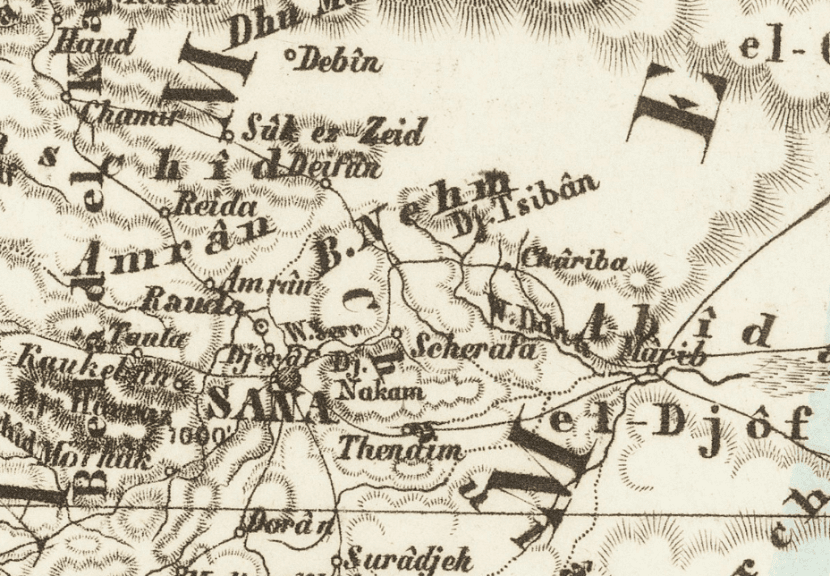
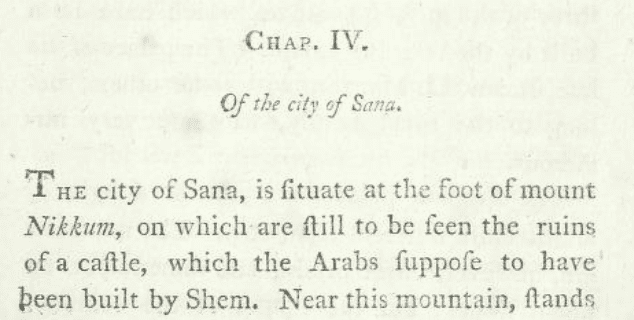
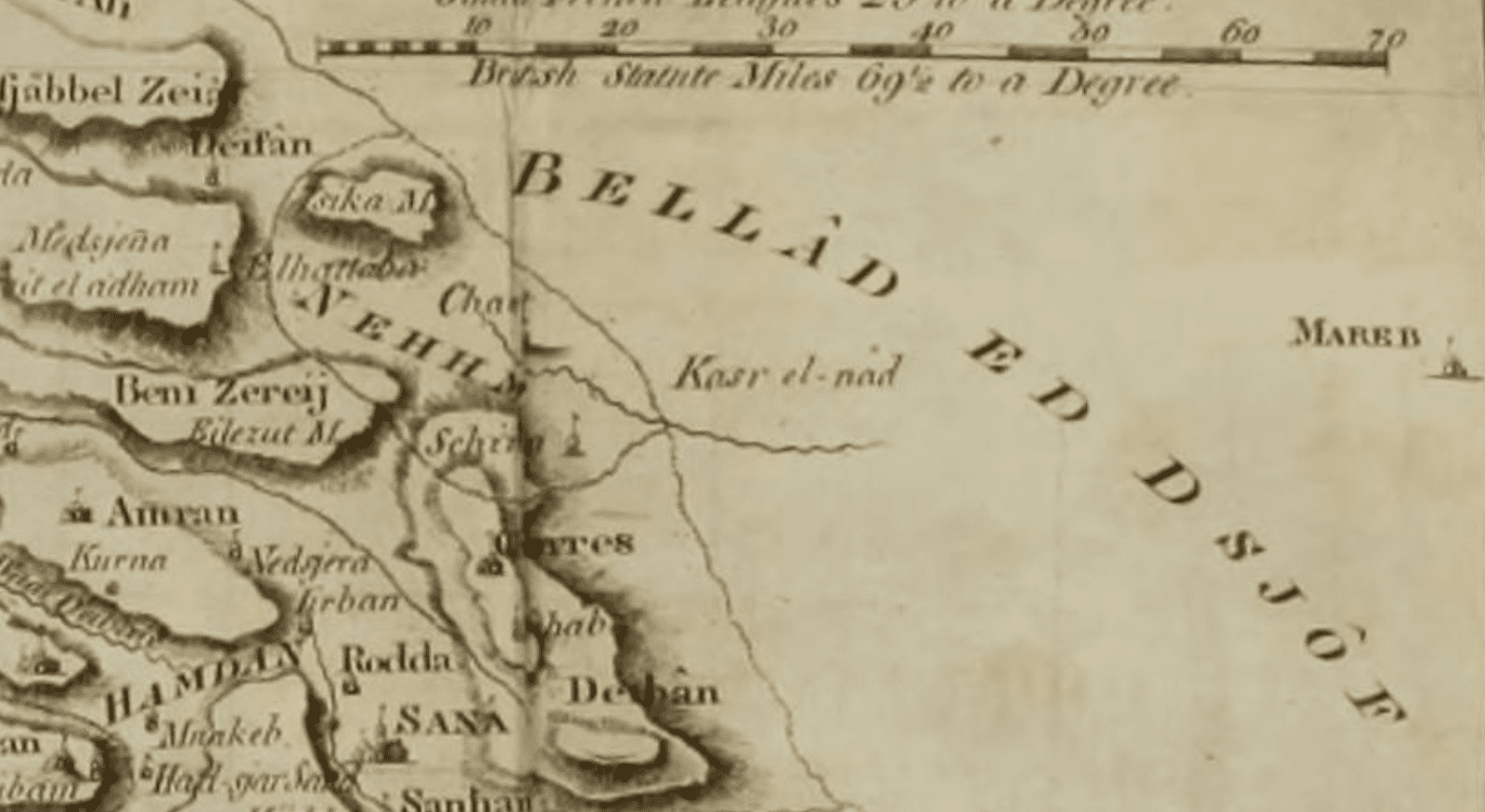
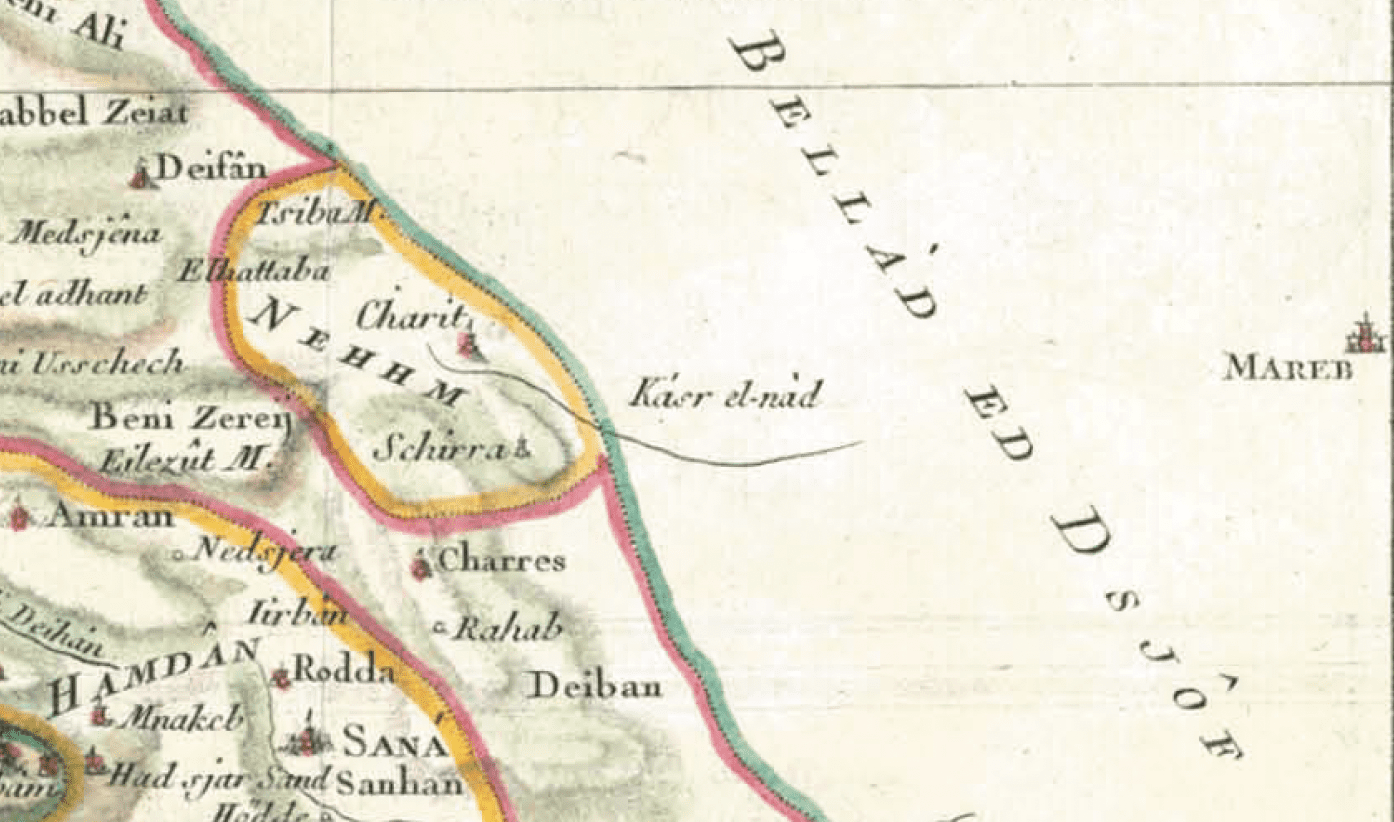
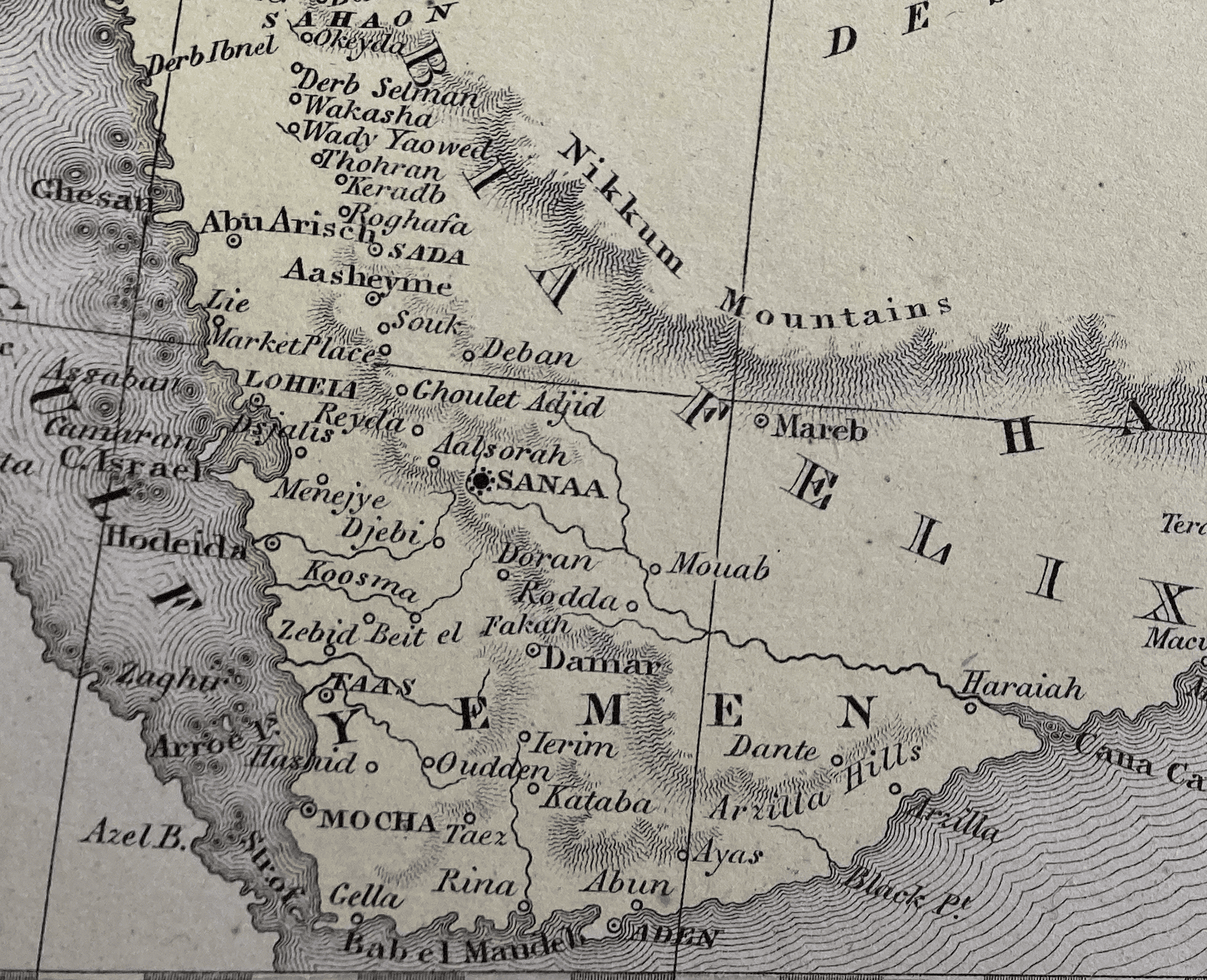
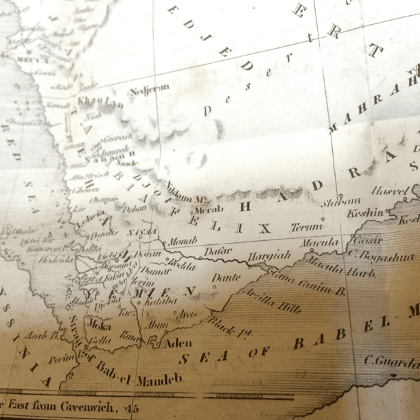
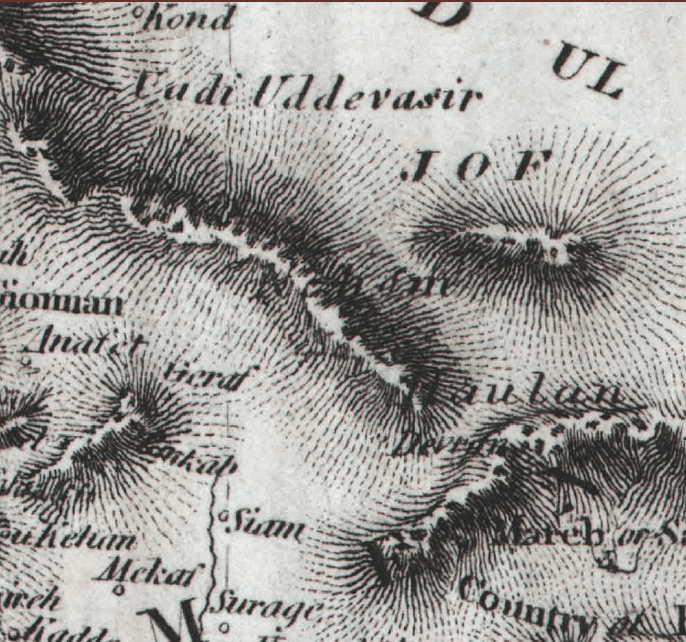
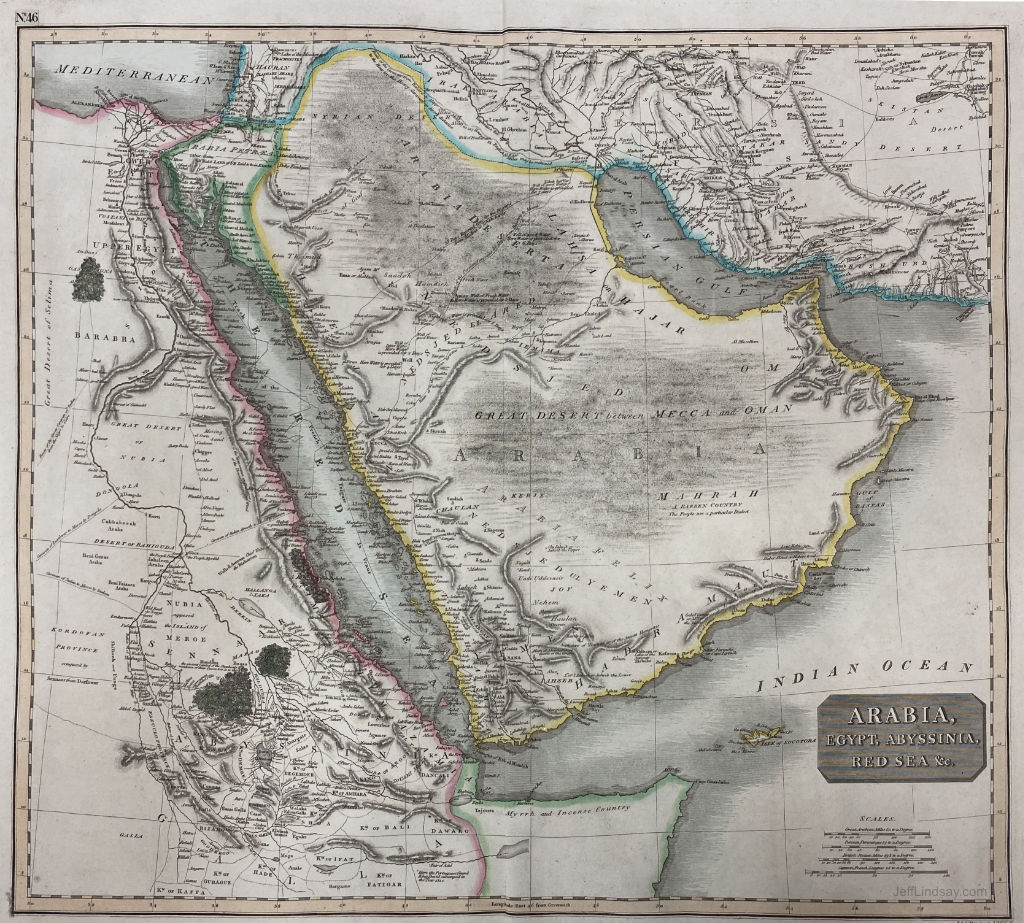
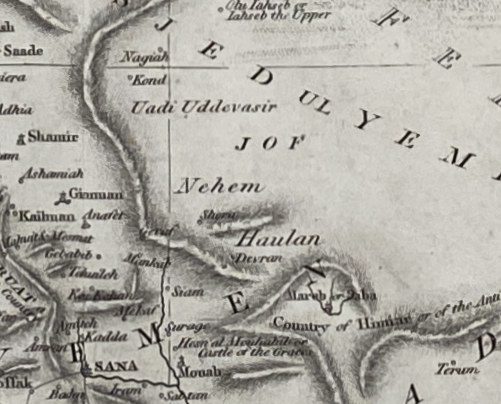
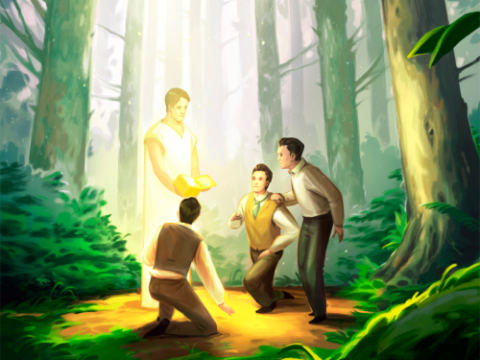








Yeesh. I don't think this is really anything to get so excited about, Jeff. Has an actual, non-LDS linguist commented on this cooincidence?
Hi Anon,
Just to be clear, you are talking about a place name with the same consonants and the location that fits with geography described in 1 Nephi? If so, a quick Google search of Nahom turned up a Wikipedia article which also has "criticisms of connection" section. You should read it.
https://en.wikipedia.org/wiki/Nahom
Steve
https://en.wikipedia.org/wiki/Talk:Nahom#Criticism_of_Nahom
The wikipedia criticism section is lacking. It fails to mention Chris Johnson observation of the need for a baseline to establish any satistical significance, something Jeff Lindsay does not dispute. Also, pretty much anywhere along the seaboard is a square peg that could be pushed into fit, etc.
https://mormanity.blogspot.com/2013/12/the-significance-of-nahom-just-three.html
There is as much, if not greater, satistical signficance to NHM and the BoM as there is Capt. Kidd/Comora Is.
None of this is included in the wikipedia "criticism" section, which appears reads more like a pre-emptive apology.
The most likely origin is the "grab-bag" of names Joseph and others culled from the bible and maps. Anything even tenuously linked to a place in the real world is coincidence.
Well, maybe there isn't much criticism at all to be had about Nahom. Wikipedia is a collaboration of the community and I would wager a bet that pro and con troll those articles adding what they can.
You have a hypothesis that there was some sort of grab bag of names that was used and that Nahom amounted to no more than a shot in the dark. Maybe you can elaborate on your hypothesis into a working theory and post in the criticism section on the Wikipedia article?
Steve
Funny. An anon invokes the word “coincidence” and Steve responds with Wikipedia criticisms and then later decides that was not a good response. Then Steve magically converts the word “coincidence” into “shot in the dark”, when coincidence is the absence of any shot, in the dark or otherwise.
Before Wikipedia, the Sunstone group at MormonThink have long requested Jeff explain his criteria distinguishing coincidence and connection. Jeff failed to produce any criteria, utterly capitulated the question.
Such artificial connection creation of Steve and Jeff are classic examples of our members who struggle to obtain a testimony of the gospel.
Dear Steve,
No.
Sincerely,
Anonymous
There is a difference between a narration (proposition) and a true narration (a true proposition). We do not know if a narrative is true or not — maybe so, maybe not. Truth is established by factual evidence that supports a claim. I might tell you that my car is gray. That may or may not be true. The best way to establish the truth of my statement would be for any non-believer to look at my car. The facts support the actuality of the proposition.
So here is a narrative: "Also, pretty much anywhere along the seaboard is a square peg that could be pushed into fit, etc." I take the "etc." to mean that anonymous could find a place anywhere along the seaboard that would fit his narrative regarding Nahom-related names." If he can do it, that would bring factual evidence to support his claim. Otherwise, it is an unsupported claim. Put simply, it is not evidence.
John Robertson
We have to remember that Nahom is at the convergence of multiple lines of evidence. It is one led of a three legged stool–so to speak. It is exactly where we would expect to find it in relation to Lehi's encampment(s) to the north and Bountiful's location to the east–each with there own multiple lines of evidence.
And so, even though it may not amount to proof–it should be received as strong evidence because of how it — an ancient location bearing the correct name — is perfectly situated at the crossroads of multiple lines evidence.
Jack
Ugh. Please forgive my spelling.
Jack
Anywhere along the seaboard fits the narrative. Done. Claim supported. Factual evidence provided for John Robertson.
John Roberston's need for artificial connection creation is yet another example of our members who struggle to obtain a testimony of the gospel.
Dear Anonymous,
Silly me. I clearly misunderstood what you meant to say in reference to our discussion of Nahom and the maps. I understood that "ANYWHERE along the seaboard is a square peg that could be pushed into fit, etc." meant that I could find a particular thing (a square peg, say Nahom) ANYWHERE along a seaboard (say, a map) — a particular square peg that could forced to fit along a seaboard.
Wrongly, here's what I inferred: Given the focus of the discussion, I thought, for example, that the word Nahom or a cognate (i.e., the particular "square peg"), could be found ANYWHERE on a map. Nahom, or any other particular thing, can't be found anywhere on any map, but it can be found SOMEWHERE on each of the maps of the maps in question, a square peg being forced to fit notwithstanding.
I'll bet you really meant something different from my inference, which could have had something to do with Nahom and maps, or not? — if I or anyone could only figure out what you had in mind. Maybe the the real answer is found in the use of your word "etc.," which means "indicating that a list is too tedious or clichéd to give in full."
John Robertson
Dear John Roberston,
Your silliness is forgiven.
Maybe you can help Jeff finally answer the question, how does one disquish between coincidence and connection?
http://www.mormonthink.com/coincidence.htm
Or Chris Johnson's demonstration regarding debunking of the critic's connection of the 1827 Anthon Book, how that "connection" was stronger than NHM and it has been debunked much to apologist's delight.
MormonThink never contacted me as far as I know. I'm easy to reach if they wanted to. So if they are claiming victory because I didn't notice something they once posted, that's not much to brag about. And did they try contacting the people doing the original work on Nahom such as Warren Aston? Or did they even bother reading his works, including a journal article in an non-Latter-day-Saint journal on the importance of the NHM name?
The MormonThink piece is excellent, Jeff. Did you read it?
–OK
The question about coincidence versus connection reveals a complete lack of understanding about what has been found and discussed regarding the significance of Nahom. There are multiple unlikely strands coming together that raise severe mathematical doubts about coincidence.
In linguistics, this issue comes up frequently when considering whether two languages might be part of a related family. Cognates can almost always be found, but a handful of cognates can all be false cognates, mere coincidences. Some are really fun, like the Chinese character for the noun "to swallow" being almost the same as the character for the bird we call a "swallow." But one unusual find like that is not a sound basis for a true connection. The probability of something more rises greatly as the number of cognates exceed a handful, such as a few hundred or more, particularly when they follow plausible rules for sound changes which fortify the evidence, and especially when some words have rich associations in meanings that would be unlikely by chance. Multiple strands coming together in a rich way can erase doubts and establish a connection.
Such convergence of multiple strands, multiple "coincidences" if considered apart from all the data, that's what is happening in the Arabian Peninsula. Those strands include the River Laman and the Valley Lemuel, once mocked as impossible, now with a remarkable candidate that adds insight to the story (that's another part of the multiple strands issue — when some of the strands add new meaning, it raises the significance of the set) complete with the wadi across from the likely campsite that can lead directly southeast to Shazer, and then the general direction toward Nahom, and the relationship between Nahom and a nearly due east route to a plausible candidate for Bountiful, also long said to be impossible, with about the only reasonable site for a possible eastward turn being around Wadi Jawf near NHM tribal lands. The multiple strands also include hard archaeological evidence from the 7th century BC for the prominence of the NHM tribal name in that general region, the rarity of NHM names in the Arabian Peninsula, the richness of meaning associated with NHM including the stone mason concept Aston has explored as a connection to NHM as burial site and the apparent Hebraic wordplay on the name Nahom, and some other strands as well. It's not just that some kind of NHM name occurs somewhere on the map. It occurs in the right place, with the right relationships to other places, south-east of a real candidate for the River Laman and nearly due east from an plausible Bountiful candidate on plausible, non-impossible path, with the right connections to burial and mourning implied by the text, and with hard archaeological evidence that the name was prominent in Lehi's day. Several of these strands are highly improbably. The combined effect defies coincidence. But you can throw that word out all day. What criteria do you have for saying "enough already — something's going on here!"? Any at all? Impossible to please?
I am guessing that you aren't very impressed with card tricks. If you pick a card and I tell you what it is, is your immediate response always "mere coincidence!"? The evidence around NHM is much more impressive than the coolest card trick I know, and not mere deception like my card tricks sadly tend to be (please don't tell anyone!).
Shorter Jeff Lindsay: "I don't understand basic research methodology."
— OK
That being said, I must confess I know some cool card tricks. My favorite involves two cards, both freely named by two different people. Then a bizarre coincidence occurs. I'd like to give it a try and get your impression next time you are in my area. Then we can talk about coincidence a little more deeply. This one has odds of about 1 in 2500, mot just 1 in 52.
I have been posting that MormonThink and requesting a response on Mormanity for years. The I did't know excuse is pure nonesense. Jeff still provides no repeatable methodology that can be applied equaly to NHM and Capt Kidd a Comora. To apply Jeff's reasoning consistently, Pomeroy Tucker's testimony of Joseph Smith affinity for Capt. Kidd stories and the independent discovery of Comora and Moroni should have the same plausible connection. Jeff dismisses it as a coincidence.
All Jeff does is provide deceitful, redflag distractors and exagerations. Everything under the sun has been mocked, but to read Jeff, some evangelical that got a degree in biology and uses Jeff's same poor reasoning qualifies for "once mocked as impossible" and "long said to be impossible" So what? What hasn't once been mocked? Even the Book of Mormon narrative suggest it is impossible, that is the point of it being a miracle! The "once mocked" and "long impossible" are nonthing but deceitful strawmen to force an imagined connection. Fact is, the Arabian pensiula seaboard timbered and constructed ships long before Joseph Smith. And? A campground and letters is what is supposed to be make us sit up and say ahh?
Jeff writes: "What criteria do you have for saying "enough already — something's going on here!"? Any at all? Impossible to please?"
Chris Johnson answered that question, but Jeff mocked him. The burden is on the one making the assertion to produce the baseline for comparison, just like the 1827 Anthon Book, as Chris Johnson instructed Jeff. Jeff knows he can't do this runs away from his burden and attempts to place it others.
Yes, Jeff is impossible to please.
Notice how Jeff completely ignored the distinction betweeen a posteriori and a priori testing and only squeaked out feeble complaints of throwing the word coincidence around. Talk about a complete lack of understanding, or should be say, talk about deliberately playing dumb. What a deceitful person he is.
"The number of [strands] reflects the amount of searching that has been done to dig them out rather than any specific connection"
"Crackpot science, on the other hand, works in the other direction. A pet theory of the "crackpot" is proposed. Since the formulator of the theory is more interested in supporting his theory than in finding the actual truth, the evidences that will or will not support the theory are not decided upon ahead of time. The "theorist" looks through all kinds of possible evidences that may or may not be consistent with his pet theory and only records those that he feels are favorable."
…. perfectly describes the NHM thing
I was decided to read some comments here after Jeff's newest post (I haven't been back here since I posted). It looks like my original post was not as well understood as I had hoped.
I pointed to the Wikipedia article about criticisms of Nahom only to show that there aren't many criticisms about the Nahom place name in the Book of Mormon and the proposed ties to the NHM place name on the Arabian peninsula. And maybe there are more criticisms that just didn't make it to the Wikipedia article. But, since Wikipedia is a collaboration of the community, I would expect people to contribute freely. In short, my original post to read about the criticisms of Nahom was intended completely as it is, there aren't many criticisms.
Non-believers will categorize this things as coincidences and believers will categorize them as connections. There is the distinction.
For the Nahom place name "coincidence": This coincidence happens after the coincidence of the Valley of Lemuel and Shazer and afterwards fits in the pathway geographically to Bountiful. These probabilities are all related…. if this then this then this, etc giving the chance of a coincidence really small. How small? I have no clue. Now the long tail of statistics can happen so it can all still be a coincidence still.
Now, you give me too much influence over people's souls. People not gaining or having troubles maintaining their testimonies because of my comments? I work to have influence on my own life. Influencing other people's lives? Hardly.
Steve
Well, I'm still in shock after finally digging in and confronting a nuclear-level blast of reality from MormonThink. Some of the parallels were not super impressive, but the idea that both Lincoln and Kennedy were ship captains, or that Lincoln had a secretary named Kennedy and vice versa, well, who wouldn't be wowed by that? So I can see how OK and other scholars were deeply impressed with such evidence and its devastating implications for the Book of Mormon. I had no choice but to capitulate, as I've now publicly announced in my latest mournful post, "'O Captain, My Captain': Walt Whitman's Surprising Role in the Ultimate Refutation of All Book of Mormon Evidence." Abandon hope, my friends.
Anonymous @11:56 claims he's been telling me about the MormonThink article for years. Maybe he has, but this is the first time I've seen it. Maybe my eyes glazed over at your posts, wherever they were. Sorry, I'm not interested in looking every claim people made by people who don't have an identity to defend, so may have ignored yours, if you did try to let me know.
As for mocking Chris Johnson, did you follow what he did? Offering random NHM names that could have inspired Joseph Smith, most of which simply make no sense. But you suggest I ignored him and responded with laughter only, when in fact I dug in far deeper than he did to explore the merit of the wild arguments. It was the silliness of the arguments and the utter lack of merit that results in the unavoidable humor, not an attempt to avoid the data with nothing but mockery. See my posts, "The Significance of Nahom: Just Three Letters?" (Part 1) and then "Noham, That’s Not History (Nor Geography, Cartography, or Logic): More on the Recent Attacks on NHM" (Part 2). Now is there any non-humorous way to point out that smoking gun evidences Johnson relies on for the alleged abundance of NHM names relevant to the Book of Mormon happens to be include an obscure tidal creek, a tiny 150-meter long street in Zimbabwe, a mythical name created when Google misread a vertical string of text saying "Library and Archives, Canada," or other places that just didn't exist in Joseph's day, certainly weren't known to him, and often still don't exist in ours? Book of Mormon evidence doesn't count because there's … there's … a tidal creek named Nahimha in Tanzania! Really, it's much more convincing to stick with MormonThink's argument: Lincoln's name has SEVEN letters, and so does KENNEDY….
Another anon said random crackpot evidences "perfectly describes the NHM thing."
You forget that the issue of Arabian Peninsulsa evidences began as evidences AGAINST the Book of Mormon. There are no rivers in Arabia. There's no place like Bountiful. Crossing the Peninsula would be impossible. The story is fiction.
Then came evidence that a river in a tall valley existed in the right location after all. That's not a random tidbit, but a direct result of looking at the detailed implications of the Book of Mormon and doing field work, yielding a total surprise. The same happened for Bountiful. Is there a place with water, fruit, flint, trees, cliffs, etc., that could have been Bountiful? In fact, yes there is.
But is it in the right place? The key is Nahom, which links the south-south east plausible path coming from the impossible but confirmed River Laman to the eastward journey to the impossible but plausibly confirmed Bountiful. And where those lines cross, guess what? It's near NHM tribal lands anciently and still today, with hard archaeological evidence showing that the name was prominent in that region in Lehi's day. This wasn't the result of a crackpot hunt for questionable data — it was a find from professional non-Latter-day Saint archaeologists. The multiple strands related to Nahom create an strong array suggesting that the details of Lehi's trail, with major discoveries in support of each named place, the River Laman, the place Shazer, the place others called Nahom/NHM/Nihm/Nehem, and the place Bountiful, all make sense, after seeming so ridiculous to the world for so many years.
And you now want to saw it's all just random coincidence? What was it before the evidence was found when you had a geography book from Arabia saying that there are no rivers there? Nobody was complaining that such evidence was just random negative tidbits. Now when the negative evidence is overturned by hard positive evidence, like a real constantly flowing stream of water in the right place, or the NHM name engraved in stone from Lehi's day, it's just random coincidence? Nothing to see? That line of thinking seems a little off.
There Jeff goes yet again with his double standards.
Steve says: “Non-believers will categorize this things as coincidences and believers will categorize them as connections.”
Not true Steve. Many, many believers believe it is a coincidence. There is zero requirement to accept a connection. It is mostly members who never really developed testimonies of the gospel who believe there is a connection.
Jeff says: “You forget that the issue of Arabian Peninsulsa evidences began as evidences AGAINST the Book of Mormon. “ Jeff is conveniently forgetting the comments above addressed this.
Some imaginary “elite critics” that exist in Jeff’s head supposedly agreed with the Book of Mormon that Lehi’s exodus was indeed miraculous. Impossible to forget something one never knew in the first place, but no one is forgetting that Jeff has bogeymen in his head. It is just that no one but Jeff cares whether these bogeymen exist, because it is in fact completely irrelevant, as Jeff knows. Jeff’s ability to articulate his bogeymen into existence does not a connection make. However, inventing special forces red flag attacks does shed light on himself.
Jeff has provided no meaningful dialog to the discussion and his emotional rambles address none of the substantive issues raised long ago by MormonThink, a neutral website presenting both sides.